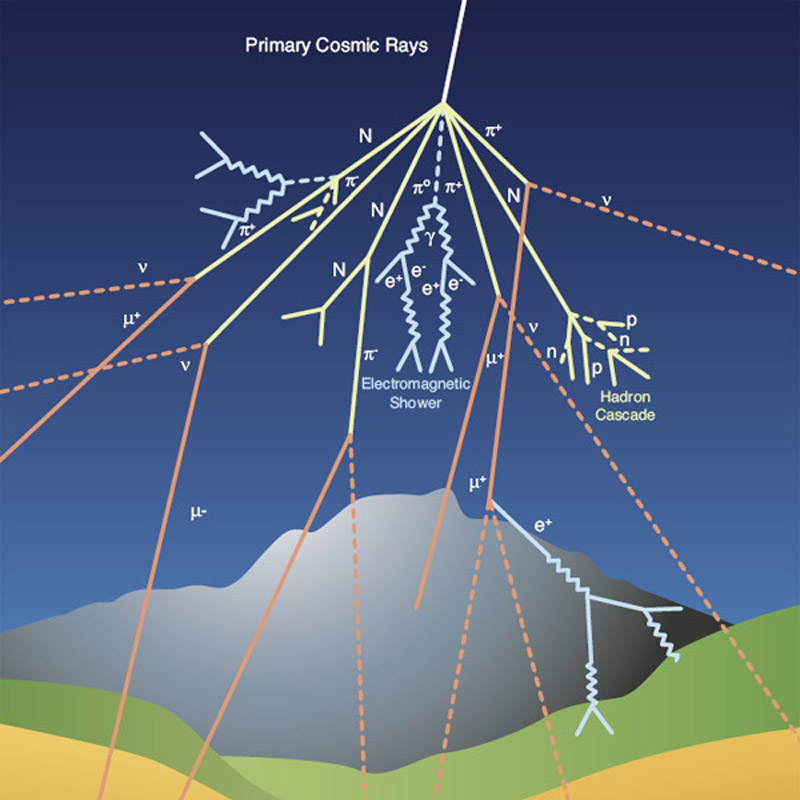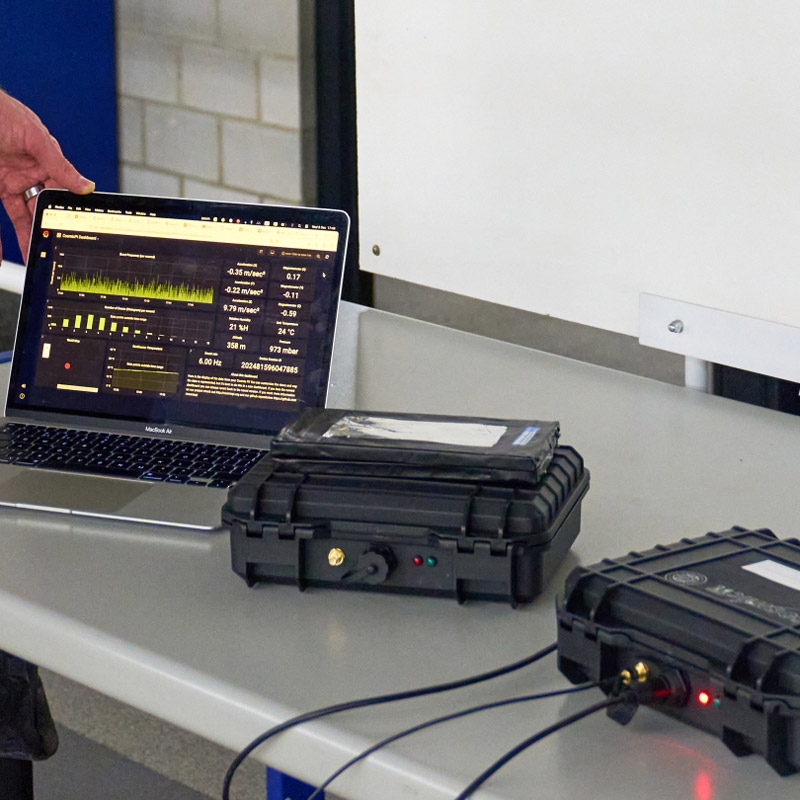Science & Techonolgy
The Science on board
Transglobalcar’s circumnavigation of the Earth will traverse both geographic and magnetic poles, in a continuous trajectory and using the same scientific instruments for the entire scientific programme on board. This is of unique interest for a variety of studies and a record making feat for some of them.
From ice thickness at the North and South Poles to the flow of cosmic radiation coming from distant regions of our universe, from light pollution to the study of human physiological changes in extreme environments, the expedition’s scientific programme includes the measurement of crucial parameters for understanding the unprecedented change our planet is undergoing in the last 5 to 10 years, thus contributing to the search for global solutions.
Driven by a passion for discovery, the Transglobalcar expedition crew is committed to make local and global impact, benefiting communities along the way with communication and outreach activities.
Stay connected with the expedition’s progress, discoveries and updates through their official website and social media channels.
Empower Your Students with Real-World Science!
Cosmic Pi
The expedition will deploy a series of portable cosmic muon detectors on its vehicles, which use open source hardware and software. The first to join the trip on the leg to the North Pole is named Erebus, after the glorious ship which took part in the Ross expedition to Antarctica in 1843. These detectors have been adapted to endure the environmental extremes encountered in the hottest and coldest parts of the world, promising unparalleled insights into cosmic ray activity throughout the expedition.
Follow the cosmic radiation measurement in real time during the trip.
Cosmic Rays - The Science
Cosmic rays are high-energy particles that originate from various sources beyond our solar system, often from distant galaxies or supernovae. Since the beginning of the 20th century, adventurous expeditions have made attempts at measuring the deluge of cosmic radiation sweeping our planet at the pace of a few thousands per second per square centimetre. These charged particles coming from the cosmos are not very different from the atomic particles studied at the Large Hadron Collider at CERN – except for their energy, which are extraordinarily high, essentially inaccessible even to the most powerful particle accelerator in the world.
Cosmic rays were discovered in 1912 by Austrian physicist Victor Hess (1936 Nobel Prize for Physics). Over 100 years later, they continue to be a new frontier in science. High-energy cosmic rays interacting with our atmosphere have travelled from remote regions of the cosmos for hundreds, thousands or even millions of years. Their energy is so high that it cannot be generated by supernovae, pulsars or even black holes – so where do they come from? Their origin is not yet understood, but studying them can reveal the information they carry from those far away regions of the universe and about their own nature.


The flow of cosmic radiation is particularly intense at the Earth’s poles, as these charged particles are attracted by the planet’s high magnetic field. While cosmic radiation is well studied at the South Pole, where it is “easier” to establish permanent observatories (Antarctica is a real continent, unlike the North Pole which is just frozen sea), measurements above the Arctic circle are extremely rare. In 1933, physicists Compton and Lemaitre organised 8 voyages around the earth, from the Arctic to the Antarctic circle to measure cosmic radiation, reaching a maximum latitude of 78°N. The northernmost measurement of the cosmic radiation was carried out by the Polarquest expedition in 2018 at 82°07’N and is still unbeaten. Transglobal car expedition is set out to beat that record and reach the highest latitude possible: the North Pole.
Cosmic rays influence the formation of clouds (see CLOUD chamber experiment at CERN!), and the earth’s global cloud cover has a crucial impact on climate. Understanding how cosmic rays affect cloud formation is important to understand how our atmosphere was formed, and to better model the Earth’s climate. A recent study also shows relation between cosmic rays flux and earthquakes.
Arctic Sea Ice Thickness
In the past 40 years the extent of the Arctic sea ice has strongly decreased and there is growing evidence that the ice cover is also thinning. A melting Arctic has a demonstrated impact not only on the polar region, its ecosystems and local populations, but is now recognized as one of the main causes of the acceleration of global warming.
The extent of the Arctic ice cover is very well monitored by satellites. However, ice thickness observations – which use different techniques, such as satellites, drifting buoys or in situ – are still scarce and subject to uncertainties, hindering the compilation of consistent data sets.
To date, in situ measurements are still the only means of accurate snow thickness observation and they are invaluable for the validation of airborne and satellite measurements.
The Transglobal car route is ideally suited to carry out extensive and rare in situ measurements of sea ice and snow thickness in the high Arctic Ocean at as many individual sampling sites as was possible under satellites overpass. These measurements will give unique insights into the present state of sea ice in one of the most difficult to reach regions of the Arctic Ocean.
Citizen Science
Citizen Science projects engage people in scientific research, involving them in a broad range of activities to produce scientific knowledge, from mapping natural phenomena to analysing historical documents.
Citizen Science allows the collection and processing of data on a scale that would be impossible with traditional research methods. This is particularly relevant for monitoring environmental factors at the local and global level, as technologies like smartphones and personal computers open up innovative and effective methods and techniques.
Above all though, Citizen Science fosters public awareness and interest in scientific research, empowering communities to take ownership of the questions and problems being addressed, which often directly affect them and their communities.
The Transglobal Expedition Crew advocates for the involvement of all people in Citizen Science. During the journey, they will join and champion two fascinating Citizen Science projects expanding the frontier of knowledge for science and society.

Searching for Dark Matter
Particle Hunters is an international Citizen Science project created by the Cosmic Ray Extremely Distributed Observatory (CREDO). By joining the “Transglobal Expedition” team in the competition, citizens will co-create the world’s largest detector for cosmic radiation, looking for signs of dark matter and studying their potential influence on earthquakes and cancer.

Monitoring Light Pollution
Globe at Night is an international Citizen Science project by NSF NoirLab to raise public awareness of the impact of light pollution on society, including effects on human and animal health, and on our cultural heritage. The Transglobal Crew invites citizen scientists everywhere to join them in measuring and submitting their night sky brightness observations.

Hôpital de la Tour
The Transglobal crew will not just carry out experiments but be the guinea pig of a physiology experiment. The purpose of this study, in collaboration with Hôpital de la Tour, Meyrin (Geneva canton), are biological changes in humans exposed to the extreme conditions of the North and South poles. Extreme cold, lack of sunlight (or the 24 hour long daylight, according to the season) and the seasonal variations characteristic of these environments influence the circadian cycle and the production of melatonine, thus perturbing sleep, body temperature and hormone production. In particular, the production of thyroid hormones such as thyroxine and triiodothyronine are crucial for the body temperature regulation. The crew’s response to the isolated conditions of this regions will also be measured. Isolation is proven to have an impact on the muscular system, which can also be affected by prolonged immobility.
The crew will undergo various medical examinations before and after the expedition, measuring various parametres in their blood as well as RMN-I to assess changes in the muscle system. A control group will also undergo the same measurements.
The data gathered from this programme will benefit research into human physiology and educate the public about the effect on our bodies of exposure to extreme climatic and physical stress.